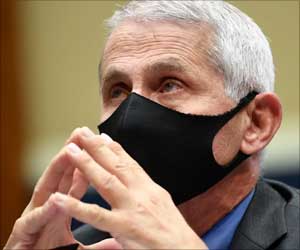Unilateral chewing can lead to facial asymmetry, TMJ disorders, and poor oral hygiene. Balanced chewing habits prevent dental and jaw issues.

- Unilateral chewing is habitual due to lateral preference habit
- 45-97% of the global population prefer unilateral chewing
- Unilateral chewing has harmful effects on facial muscles, temporomandibular joint and oral hygiene
Mastication or chewing, plays an important role in the proper jaws and oral cavity development. Chewing is the process of crushing and grounding food with teeth.
Chewing can be done on both sides of the mouth (bilateral) or preferring only one side (unilateral). The habit of unilateral chewing is habitual due to a preference. This can be due to lateral preference as humans prefer to use one side of the body over the other side (1✔ ✔Trusted Source
Chewing Side Preference – Impact on Facial Symmetry, Dentition and Temporomandibular Joint and its Correlation with Handedness
).
Unilateral chewing preference is common in the global population with a prevalence of 45-97% (2✔ ✔Trusted Source
Chewing side, bite force symmetry, and occlusal contact area of subjects with different facial vertical patterns
Go to source). This habit can lead to many dental effects and overall health.
Advertisement
Effect of Unilateral Chewing on Facial Asymmetry
Unilateral chewing is associated with lateral facial asymmetry, where muscles are more developed on one side than the unused side. The repetitive use of one side for chewing can cause over development of muscles and bone while the less used side may be underdeveloped.
Facial asymmetry will be evident if unilateral chewing habit persists throughout the developmental stages.
Advertisement
Unilateral Chewing Effect on Temporomandibular Joint
The temporomandibular joint (TMJ) is the joint that connects lower jaw to the base of skull. This joint is highly sensitive to mechanical stresses caused due to chewing.
Chronic unilateral chewing leads to temporomandibular disorders (TMD), due to the imbalance in joint and masticatory muscle activity. TMD can cause symptoms such as
- Pain around or near the ear
- Soreness in the masticatory muscle
- Limited or uneven jaw movement while opening or closing the mouth
- Clicking sound in TMJ during jaw function
- Restricted jaw movement and in severe cases can cause trismus (difficulty opening mouth)
- Headache, neck and shoulder pain
Advertisement
Effect of Habitual One-sided chewing on Oral Hygiene
Chewing has a self cleansing ability on teeth where food debris between teeth is swept away on chewing due to action of saliva and other movements. This prevents plaque accumulation and prevents caries on the used side.
The side not used for chewing can accumulate plaque and calculus. Other effects are
- Increased dental caries
- Gingival inflammation/ gingivitis
- Loss of bone/ periodontitis
- Tooth loss
- Tooth abrasion/ tooth structure loss due to overuse
- Teeth misalignment/ malocclusion
Unilateral chewing might appear as harmless habit but it can cause consequences that affect dental and overall health. Unilateral chewing is a habit we develop due to pain or unconscious habit.
To prevent the harmful effects of unilateral chewing it is better to practice mindful chewing habits, treat any dental problems if present and use dental splints for TMD or misaligned teeth.
References:
- Chewing Side Preference – Impact on Facial Symmetry, Dentition and Temporomandibular Joint and its Correlation with Handedness – (https://journals.lww.com/joro/fulltext/2017/09010/chewing_side_preference___impact_on_facial.5.aspx)
- Chewing side, bite force symmetry, and occlusal contact area of subjects with different facial vertical patterns – (https://pubmed.ncbi.nlm.nih.gov/22031059/)
Source-Medindia



